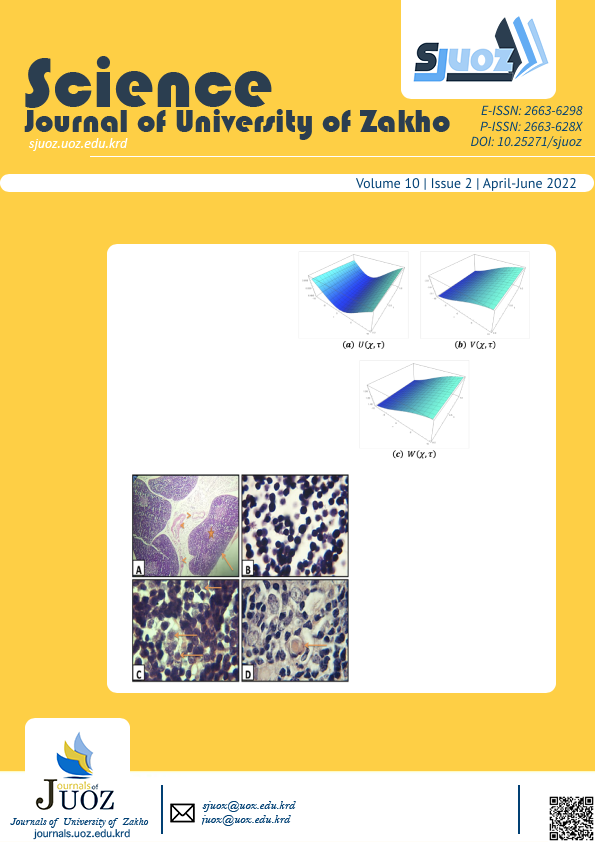Effects of Noise Pollution on Zakho University Students at Two Faculty of Science Buildings
Abstract
Noise is a type of pollution that has a negative impact on human health and well-being. Because of population growth and urbanization, the magnitude and severity of noise pollutionare increasing. This study examines the level of noise throughout Zakho university-faculty of science buildings. Noise levels were measured using a sound level meter at two campus buildings at five different times (9:00 AM –2:00 PM). A total of 180 students (98 females, 82 males) were questioned to collect data. The noise levels were highest at the ground floor of building one were at (11:00AM-12:00PM) and (12:00-1:00 PM), respectively, changing from 60.6 to 73.7 dB at (11:00 AM-12:00 PM) and 63.3-73.8 dB at (12:00-1:00 PM) (12-1:00 PM). These results could be due to students taking a lunch hour after 12:00PM and visiting a café at this site. The most prevalent direct impact of noise on students was feeling annoyed, which affected 23% of students, followed by headache (18%) and so on. Noise has psychological effects on students such as anxiety (6%) and sleep problems (4%) which all have a low percentage. Lastly, memory lapse (2%) and fatigue (3%) impact on students had a lower proportion when compared to other impacts. However, there was 22% of students did not affect by noise.
Full text article
Authors
Copyright (c) 2022 Thabit Elias Basheer, Omar Salih Omar, Suzan Khalid Hashim

This work is licensed under a Creative Commons Attribution 4.0 International License.
Authors who publish with this journal agree to the following terms:
- Authors retain copyright and grant the journal right of first publication with the work simultaneously licensed under a Creative Commons Attribution License [CC BY-NC-SA 4.0] that allows others to share the work with an acknowledgment of the work's authorship and initial publication in this journal.
- Authors are able to enter into separate, additional contractual arrangements for the non-exclusive distribution of the journal's published version of the work, with an acknowledgment of its initial publication in this journal.
- Authors are permitted and encouraged to post their work online.
